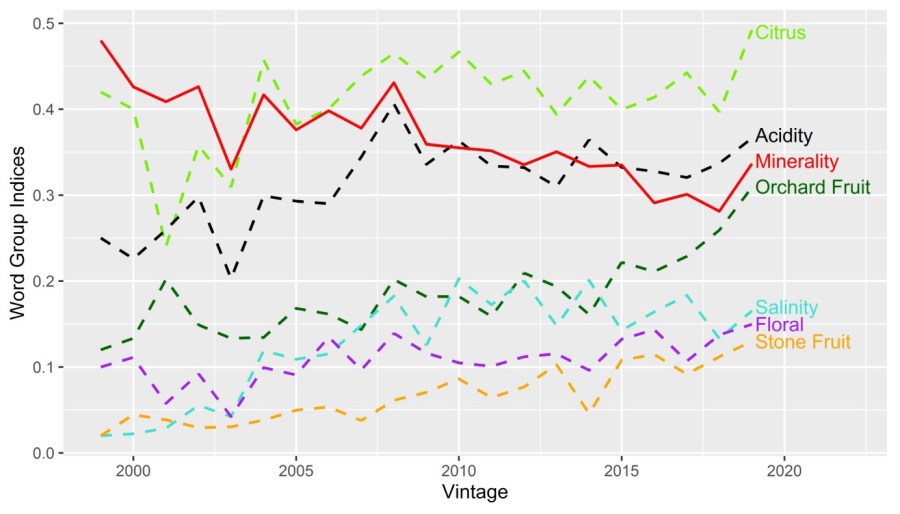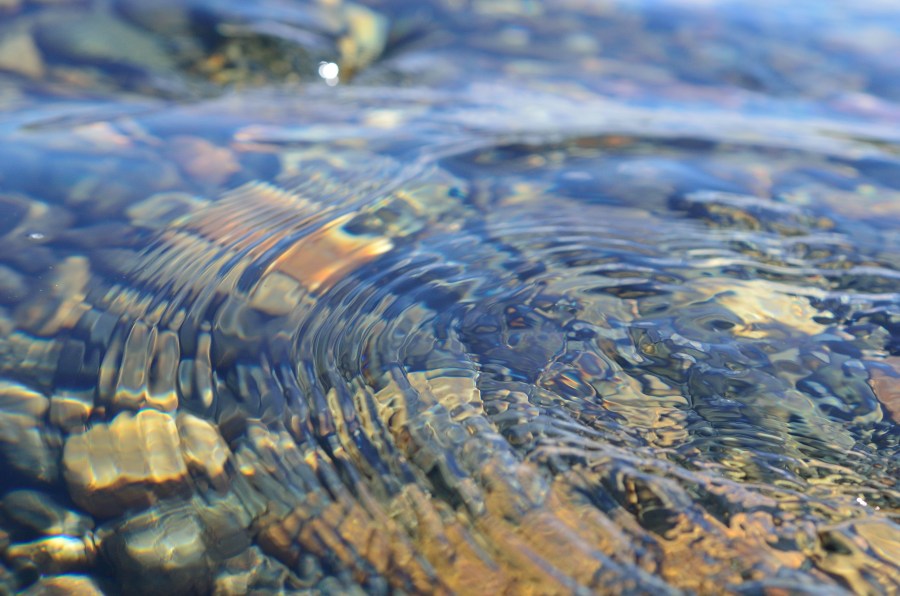Minerality is a relatively new term which has become widely used by wine professionals and consumers over the last quarter century, especially for high-quality cool-region still white wines. It is poorly defined in sensory terms, however, and its origin is difficult to pin down. Many producers claim it arises from the vineyard’s geology and soils, but this idea has largely been discredited by Alex Maltman, a geologist at Aberystwyth University, and several other researchers.
Taking Chablis Premier Cru as an example of a Chardonnay wine well-known for its mineral flavours, Alex Biss and Richard Ellis analysed thousands of tasting notes (from 2003 to 2022) on CellarTracker, a crowd-sourced database of wine-tasting notes. They combined this with weather, topography, and soil data for the Chablis area.
They found that use of the descriptive term minerality in Chablis Premier Cru tasting notes declined markedly over these 20 years, whether analysed by vintage or tasting year. In contrast, use of descriptors for acidity, orchard fruit, stone fruit, and salinity all increased over the same period (Figure 1). They also found that the use of the term minerality was mainly associated with stony perceptions (chalky, flinty, stony) and secondarily with saline and seashell perceptions.
In terms of the production environment, their analyses revealed that minerality was negatively correlated with both growing season temperature and sunshine hours, and negatively with percentage vineyard area facing South or South-West, but not with soil type. Hence, soils and geology appear not to affect minerality of Chablis wine, in agreement with Alex Maltman. On the other hand, minerality is reported less for wines from warmer and sunnier sites and growing seasons when tropical and/or stone fruit sensations are to the fore.
The researchers suggest that the decline in the use of the term minerality by consumers was probably due to three factors: (i) the warming of growing season temperature due to climate change, (ii) a decline in the popularity of the term, and (iii) the increasing use of alternative descriptive terms, such as saline (where appropriate), with minerality retained for “stony” perceptions.
One implication of the study for emerging wine regions such as the UK is that minerality is largely determined by weather and microclimate, not by soils or geology. As such, high minerality in wine, as often associated with Chablis, is possible anywhere with the right climate.

Figure 1: Trends in word groups used to describe Chablis Premier Cru wine in CellarTracker tasting notes against Vintage; an index of 0.5 means that half of all tasting notes mentioned the presence of the trait. All wines were between three and seven years of age when tasted. From Biss and Ellis, 2024.
Taken from: Alex J. Biss and Richard H. Ellis, “Minerality in Wine: Textual Analysis of Chablis Premier Cru Tasting Notes”, Australian Journal of Grape and Wine Research, vol. 2024, Article ID 4299446, 13 pages, 2024. https://doi.org/10.1155/2024/4299446




